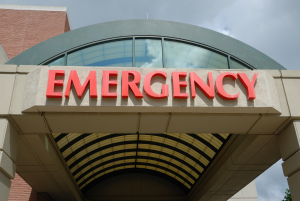
by admin | Dec 10, 2019 | Hot Topics
 Having just wrapped up Thanksgiving, we are now only 2 ½ weeks out from Christmas! While we start planning the perfect gifts for everyone special in our lives, we are also thinking of traveling to visit family and friends. Whether you go by car, bus, or plane, traveling during the holidays needs to be safe. Follow these tips to help you get to your holiday destination safely this season.
Having just wrapped up Thanksgiving, we are now only 2 ½ weeks out from Christmas! While we start planning the perfect gifts for everyone special in our lives, we are also thinking of traveling to visit family and friends. Whether you go by car, bus, or plane, traveling during the holidays needs to be safe. Follow these tips to help you get to your holiday destination safely this season.
Car Travel Safety
- Make sure you get plenty of sleep the night before you travel. Being sleep deprived results in slower reaction times and distracted driving.
- Buckle everyone up in your car—not just those in child-safety seats. If you are riding, you need to be buckled in.
- Put your phone away. That text or that phone conversation can wait. If you need to communicate while traveling, have your passenger handle your phone.
- Make a roadside emergency kit. Include essentials like jumper cables, phone chargers, flashlights, batteries, water, snacks, and blankets. Make sure your spare tire is undamaged and you have a jack and tire iron in your vehicle should you need to change a tire.
Apps to Help with Holiday Travel
- Hotel Tonight—If you find yourself getting tired as you drive, consider stopping and getting some sleep. Hotel Tonight helps you find last minute hotel openings near you.
- GasBuddy—Don’t spend your time driving around in unfamiliar areas to find the cheapest gas prices. Use GasBuddy to find the cheapest gas in your immediate vicinity.
- Waze—Most everyone knows about Waze by now. This community-driven navigation tool allows you to see where slowdowns are happening near you as well as road debris, accidents, and alternate routes.
- iExit—Trying to remember all the food places listed on the highway exit signs is hard! iExit gives you a list of what’s near each highway exit from food to hotels to gas stations.
- SitOrSquat—One of the top complaints of holiday car travel is finding clean bathrooms when you need them. This app rates public bathrooms by their cleanliness. Brilliant!
Air Travel Safety
- This goes without saying, but listen to your flight attendants. They give valuable information to passengers in case of an emergency. Pay attention to the pre-flight instructions including where to locate emergency exits.
- Get up and walk around a little during long flights. This keeps the blood moving in your legs that are probably cramped into the tiny space between seats.
- Skip the next drink of alcohol. You want to be clear-headed in case an emergency happens. Wait and have that glass of wine once you land and are safely at your destination.
- Put the oxygen mask on yourself first. If there happens to be an emergency mid-flight, you need to first place the mask on your face and then help others around you. This ensures that you are able to clearly hear instructions and are able to help someone nearby who may not be able to get the mask on themselves.
Following these simple travel tips will help get you to your destination safely this holiday season. Remember, surrounding yourself with the ones you love and value is the goal. Get to those loved ones safely and your holiday will be memorable!

by admin | Nov 19, 2019 | Employee Benefits, Group Benefit Plans
 We’ve all heard the saying “A dog is a man’s best friend” and we know it’s true! Pets give us unconditional love, companionship, and joy. But, are we willing to pay the price when a hefty vet bill comes along? Pet insurance may help you stomach that unexpected emergency room charge due to Fluffy’s uncanny ability to eat anything within reach—even if it’s rotten!
We’ve all heard the saying “A dog is a man’s best friend” and we know it’s true! Pets give us unconditional love, companionship, and joy. But, are we willing to pay the price when a hefty vet bill comes along? Pet insurance may help you stomach that unexpected emergency room charge due to Fluffy’s uncanny ability to eat anything within reach—even if it’s rotten!
In 2017, over $16.62B were spent on veterinarian bills in the United States. In that same year, Americans also spent over $1B on pet insurance. This begs the question “is pet insurance worth buying?” While this market continues to grow, 99% of pet owners report NOT having pet insurance. The number one reason? Cost. Premiums are at their lowest when you own a puppy or kitten and increase as the pet gets older. This results in the insured only keeping pet insurance for an average of 3 years. The cost of insurance can increase 5-fold between the puppy and adult years.
Pet insurance is one of the fastest growing markets in the US. This insurance can be purchased with increased levels of coverage. The most basic level may cover treatments for some common illnesses or accidental injury. The mid-range coverage could cover preventative care as well as immunizations. An example of premium coverage is surgical cost and liability for if the pet injured someone. Prices for these levels range from $15/ month to $45/month.
Pet insurance is now becoming a more commonplace employee benefit. Contingencies.org says that 6500 employers in the US and Canada offer pet insurance to its employees. A report by SHRM says that of those offered pet insurance as an employee perk, only 6% of pet owners utilized that benefit in 2012. By 2017, that number rose to 9%. Employees say this is an important benefit because, for many, pets are considered part of a family and if you insure a human member of a family, why wouldn’t you also insure your pet?
If your company does not offer pet insurance, here are some tips on what you should look for when considering purchasing pet insurance:
- How much do my premiums increase as my pet ages?
- What is covered and not covered? Does the plan include pre-existing conditions?
- Can you purchase just accident coverage for if your pet injures someone?
With our pets being a vital part of our family, having pet insurance can give you peace of mind that you don’t have to shoulder the entire cost of an injury or illness of a pet. Not having to make decisions for their care based on money is a blessing to their families. For over 6,000 companies and their 80,000 employees this perk is worth every penny.

by admin | Oct 23, 2019 | Open Enrollment
 It’s the most wonderful time of the year.
It’s the most wonderful time of the year.
No, it’s not Christmas—it’s Open Enrollment!!
When the autumn leaves fall and the weather turns cooler, we know it’s time to start thinking of open enrollment hype and meetings and meetings and meetings. So how do you change normal and ordinary communication about employee benefits and change them into rockstar communication? We have some tips that may help!
COMMUNICATE EARLY
People need time to process all the information you share about their employee benefits. Once they have received the info, they typically need to ask questions, compare/contrast plans, and weigh decisions. By communicating with your employees early, you give them plenty of time to make their choices without feeling rushed by a short deadline.
COMMUNICATE CLEARLY
HSA, FSA, PPO, HMO, LTD? What? You can see how your employees can get confused with all the terms and plan names that get presented to them during open enrollment. The Society for Human Resources Management (SHRM) suggests creating a glossary of common terms for enrollment meetings. Another way to clearly communicate benefits is to think ahead to the common questions asked each year and make a FAQ sheet with the answers.
COMMUNICATE FREQUENTLY
Did you know that it takes 8 times to read something before you retain that information? Think of all the material that gets shared at open enrollment meetings. There is no way that an employee would be able to retain that info in one sitting. So, communicate about your benefit plans all year long. Do trivia contests with prizes in your company newsletter about different benefits topics. Use multiple channels to frequently communicate such as print, digital, and animated videos!
COMMUNICATE PERSONALLY
Share “real life” examples of a sample employee with specific health issues and how they can utilize their benefits. This helps your audience think of additional situations in which they could see themselves needing some of the insurance products offered in your meetings. Host small Q & A sessions after larger meetings to allow for more personalized attention. When you communicate personally, you are able to explain the value of the benefits to your employees better.
By focusing on these communication techniques, you will reap the rewards of a well-informed and connected employee when they are choosing benefits. Plan ahead, speak with a clear message, personalize example situations, and repeat, repeat, repeat. Here’s to a great open enrollment season!

by admin | Oct 17, 2019 | Flexible Spending Accounts, Open Enrollment
 As 2019 is nearing an end, many people are looking at this year’s medical expenses to plan for how much they should set back for next year. In investigating these expenditures, you may notice that you still have money in your Flexible Spending Account (FSA) for 2019. FSAs are unique in that any unused money from this plan year is forfeited once the new year begins. You definitely do not want to leave money in your FSA once 2020 rolls around. To help, we’ve compiled a list of some ways to use up your hard-earned FSA money that you may not have thought possible!
As 2019 is nearing an end, many people are looking at this year’s medical expenses to plan for how much they should set back for next year. In investigating these expenditures, you may notice that you still have money in your Flexible Spending Account (FSA) for 2019. FSAs are unique in that any unused money from this plan year is forfeited once the new year begins. You definitely do not want to leave money in your FSA once 2020 rolls around. To help, we’ve compiled a list of some ways to use up your hard-earned FSA money that you may not have thought possible!
- Acupuncture
- Acne treatment
- Breast pump and supplies
- Chiropractic treatments
- Dental treatments—orthodontia, medically necessary water fluoride treatments, caps, fillings, x-rays
- Eyes—glasses, surgery, contact lenses
- First aid kit
- Genetic testing—including BRCA gene testing
- Motion sickness medicine
- Nutritionist consultations
- Sunscreen
- Smoking cessation program
- Vaporizer
- Vasectomy
- Weight loss programs/surgery
There are even some high-tech gadgets that may fall into the medically qualified expenses category:
- Acne light therapy
- Electronic stimulation instruments for pain
- Medically necessary mattresses
- Smart thermometers
Don’t leave your FSA money on the table in 2019! You have earned this money so make sure you use it to its full potential.
This list is not an exhaustive list of ways to spend your FSA money nor does it guarantee your insurance program considers these to be qualified expenses. Check with your HR department and insurance agent if you have questions about qualified expenses.

by admin | Sep 3, 2019 | Employee Benefits, Hot Topics
 Let’s say you are getting ready to make your favorite breakfast—avocado toast. You’ve toasted the bread, cut the avocado in half, and are ready to remove the dreaded pit. Of course, your knife slips and you end up slicing your hand—making you the latest victim of “avocado hand.” It seems you cannot stop the bleeding with a simple bandage so now you need to make the decision on where to go to seek help. Do you choose an urgent care facility or the emergency room? What’s the difference?
Let’s say you are getting ready to make your favorite breakfast—avocado toast. You’ve toasted the bread, cut the avocado in half, and are ready to remove the dreaded pit. Of course, your knife slips and you end up slicing your hand—making you the latest victim of “avocado hand.” It seems you cannot stop the bleeding with a simple bandage so now you need to make the decision on where to go to seek help. Do you choose an urgent care facility or the emergency room? What’s the difference?
Urgent care centers and emergency rooms are both great options for times when you are unable to see your primary care physician (PCP). The reasons for choosing these facilities can be because the injury or sickness has occurred outside normal office hours for your doctor or that you are out of town when an emergency hits. As you know, the first choice for non-life or limb-threatening conditions should be your regular doctor—they will have your medical history on file and your medication list at the ready. When this is not an option, you will need to make the choice on what level of care you need.
Urgent Care Centers
Urgent care centers fill the gap between when you are sick or minorly injured but cannot see your PCP and when you are in need of hospital emergency care. Most urgent care locations are staffed by doctors or physician’s assistants. These centers can get you in and out quickly and some even take appointments. Since you will not see your PCP at these clinics, it’s always best to bring a copy of all the medications and dosages of meds you take. If you have a special condition, like epilepsy, make sure you disclose that to the urgent care provider you see. In the case of your avocado hand, your urgent care physician may be able to do minor stitches and bandaging at the facility. Most have access to x-ray machines and basic diagnostic tests. The typical range of costs for care at these centers is between $50-$150.
Here are some conditions that typically can be seen at urgent care centers:
- Fevers, flu or cold symptoms
- Ear infections
- Bronchitis
- Cuts and bleeding that may require stitches
- Urinary tract infections
- Vomiting or diarrhea
- Minor back pain
Emergency Room Care
Hospital emergency rooms provide care for life and limb-threatening situations ranging from heart attack and stroke to car accident injuries. Staffed by physicians, nurses, and specialists, emergency rooms have access to highly knowledgeable and diverse medical teams. In emergency rooms, care is given to the most serious injury/illness first—not on a first-come, first-served basis. Because of this, wait times in emergency rooms are widely varied and may be into a several hours-long wait. Again, it is wise to bring a list of any medications, both prescribed and over-the-counter, with you when seeking care since the ER will not have this information from your PCP. Costs for emergency services can be anywhere from $50 to more than $10,000 depending on the severity of the injury or illness.
Symptoms that are best evaluated in an emergency room include:
- Chest pain or difficulty breathing
- Weakness/numbness on one side
- Slurred speech
- Fainting/change in mental state
- Serious burns
- Head or eye injury
- Concussion/confusion
- Broken bones and dislocated joints
- Fever with a rash
- Seizures
- Severe cuts that may require stitches
- Facial lacerations
- Severe cold or flu symptoms
- Vaginal bleeding with pregnancy
When faced with the decision to visit an urgent care center or emergency room, you have to first evaluate your symptoms. Once you have done this, ask yourself this question, “Does this condition have the possibility of permanently impairing or endangering your life?” If the answer is “yes,” then you have an emergency and should proceed to the nearest hospital ER. If the answer is “no,” then take your towel-wrapped avocado hand to your local urgent care center for stitches or whatever care they recommend. You will save yourself time and money by making a good choice on your care.

 Having just wrapped up Thanksgiving, we are now only 2 ½ weeks out from Christmas! While we start planning the perfect gifts for everyone special in our lives, we are also thinking of traveling to visit family and friends. Whether you go by car, bus, or plane, traveling during the holidays needs to be safe. Follow these tips to help you get to your holiday destination safely this season.
Having just wrapped up Thanksgiving, we are now only 2 ½ weeks out from Christmas! While we start planning the perfect gifts for everyone special in our lives, we are also thinking of traveling to visit family and friends. Whether you go by car, bus, or plane, traveling during the holidays needs to be safe. Follow these tips to help you get to your holiday destination safely this season.



